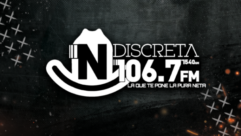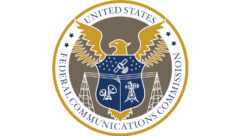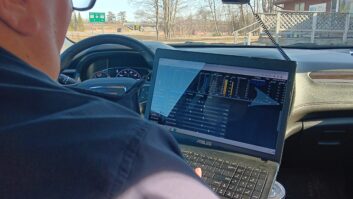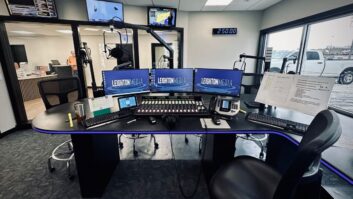The author writes in his role as head of the National Radio Systems Committee’s RBDS Subcommittee, which meets at the NAB Radio Show in Philadelphia this month.
The Radio Data System has undergone a significant renaissance in the last few years. Thanks to consumer expectations, local FM radio stations have deployed RDS for program-associated data such as “song title and artist” displays. Its use has also been expanded to “song tagging” and even as a text companion to advertising messages.
With the emergence of the Broadcaster Traffic Consortium, Total Traffic Network and Microsoft’s MSN Direct, traffic data has also emerged as a significant use. An informal NAB poll conducted late last year suggested that in some major markets, 80 percent or more of stations are transmitting RDS information of some type.
A number of factors have combined to make RDS increasingly relevant to station presentation: availability of connectivity, ubiquitous use of digital playout devices, increasing sophistication of station data networks and the introduction of new, inexpensive FM receiver chips that include RDS.
Simply put, in the past, many stations either did not have connectivity or even the playback sophistication to provide the data for broadcast over RDS. Recently RDS encoder manufacturers have developed products that continue to make it easier than ever to broadcast data. At least one company still provides a turnkey approach and others integrate display services with emergency information data.
Oddly enough, we may be able to thank HD Radio technology for this RDS renaissance. As broadcasters build out HD Radio implementations, they have had to solve a limiting problem for any data-related service and establish a viable data path from end to end — a studio source of data and the infrastructure and connectivity to get that data all the way to the FM transmitter site. The needs of HD Radio technology have presented a framework that makes enabling RDS for PAD an easy next step.
Resilience
While higher-capacity data services will be available through HD Radio technology, there is still little match for the resilience of the RDS data stream. The pleasant side effect of providing for a good HD Radio data platform is an exceptional RDS data platform. As we learn to exploit a larger data channel, we are discovering how to better use the existing RDS capability.
Also, although HD Radio systems have been widely deployed and new and exciting HD Radio receivers are hitting the market on a regular basis, it would seem that analog FM radio will be with us for some time to come. All the while, however, listeners are expecting more from their experience … like artist and title displays when songs are being played.
This change in RDS usage literally has happened over the past two years. During this time the National Radio Systems Committee’s RBDS Subcommittee, the NRSC group with responsibility for RDS-related activities, has been on hiatus. With these and other new developments there is a need to address the changes and a seemingly bright future in RDS, and consequently the NRSC has reactivated the RBDS Subcommittee and asked me to serve as its chair.
This is an unexpected and unique opportunity, maybe even a “second chance” opportunity to take the lessons we’ve learned over the past 10 years about data broadcasting and provide assistance and guidelines for broadcasters implementing RDS, developers who are creating applications and manufacturers who are designing RDS-capable receivers.
We potentially have a great deal on our agenda, including the following:
- • Updating the Standard: The RDS Forum in Europe has submitted a revised version of the RDS Standard to the International Electrotechnical Commission (IEC), which is voting on it this year. NRSC-4-A, the NRSC’s RBDS standard, is based on the IEC RDS Standard although it departs in some important ways. The RBDS Subcommittee will evaluate the new RDS Standard and determine if and how it impacts the NRSC Standard, considering any potential changes that might be necessary or desirable.The most visible change to the RDS Standard is inclusion of a powerful new data protocol called RadioText+ (RT+). This new development has an impact on how broadcasters feed PAD via conventional FM Radio while maintaining the original RadioText capability. It is through the addition of RT+ that many new capabilities, like song tagging, may be accommodated.
We’ll also want to take this opportunity to consider elements of the NRSC-4-A Standard that might need to be deleted or altered, such as the AM RDS “placeholder” which has never borne fruit. The NRSC is made up of broadcasters, representatives of consumer electronics companies and manufacturers, and others with a material interest in the activities of the committee. Input from all sides will be critical to develop a forward-looking standard.
- • RT+ Usage Guideline Development: We need to evaluate execution of the RT+ and maybe even RadioText itself with the objective of developing some best practices for implementation. These best practices can provide a consistent display experience, resulting in a more attractive feature for consumers and receiver manufacturers.In this same way, we have an opportunity to establish guidelines for emergency messages, news crawls, RSS feeds, sports scores … essentially everything we had hoped RDS could provide in the first place.
- • Receiver Implementation Issues: There are thorny issues that beg to be addressed including:Radio format codes — The original European RDS standard did not consider the vast array of diverse radio program formats available in the U.S. and, as a result, created a relatively short list of Program Type (PTY) codes, the codes an RDS-capable receiver uses to find a station by format. The NRSC-4-A Standard included many more format descriptions.
This difference between the standards, however, has sometimes presented confusion when listeners encounter a receiver that uses the RDS standard for format lists as opposed to NRSC-4-A standard. Since the RDS Standard was originally adopted, the number of European formats have grown and now more closely resemble U.S. formats.
As a result, the RDS Forum has updated the PTY list in the latest version of the RDS Standard. There may be an opportunity for greater harmonization of the PTY code lists in the NRSC and European standards as a result.
Best practices/use guidelines — Although manufacturers and others have made it much easier to implement RDS, there are steps that could be made to make it even easier. There’s also a wide variety in how RDS data is deployed by broadcast stations, resulting in a disparity between how stations appear on consumer RDS radios. A best practices or guideline document could address these issues and help the industry improve RDS implementations.
It’s already known that receivers widely vary in how RDS is used and displayed. Unfortunately, with no consistency among broadcasters, encouraging receiver manufacturers to use a consistent display convention is difficult unless there is a consistent format of data to feed it. The committee may also address this issue.
These are but a few issues the RBDS Subcommittee may be addressing.
In creating standards and developing guidelines, much of the work within the NRSC is done by dedicated industry professionals working in subcommittee sub-groups. Along with the reactivation of the RBDS Subcommittee, Steve Davis of Clear Channel Radio has agreed to lead a sub-group specifically to begin to address some of the issues mentioned and help to chart the greater subcommittee’s agenda.
As a radio broadcaster, your participation is encouraged. We invite you to participate with the NRSC and this subcommittee and help with the work on advancing this important technology.
Barry Thomas, CPBE, CBNT, is president of the Society of Broadcast Engineers and vice president of engineering in the radio division of Lincoln Financial.
RW welcomes other points of view to[email protected].












